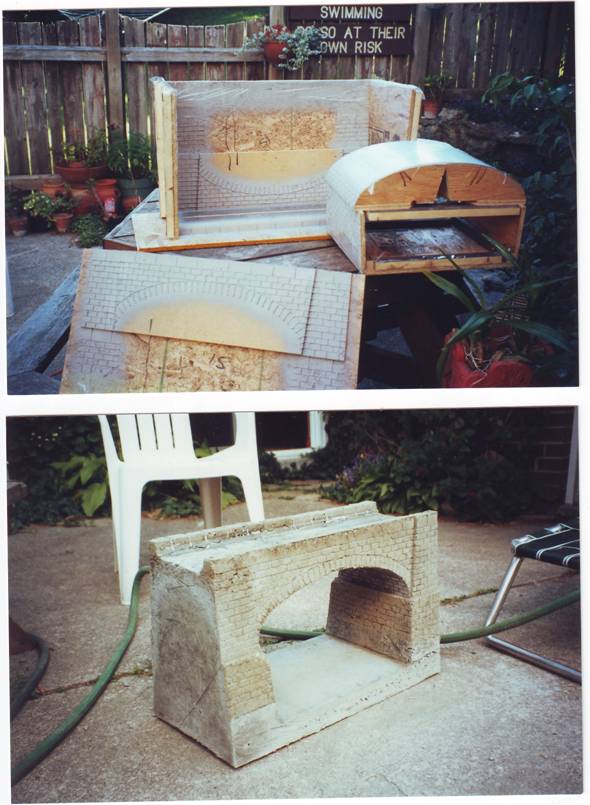

Formby Gorge and the Wednesday Night Water Boilers
My aunts used to joke about my dream of having a 9 in gauge live steam train running around the extensive garden we had at the time. For Christmas in 1998, Sue, my wife, presented me with a Bachmann G Gauge Shay hence running rights in her beautiful garden. One step closer to my dream, Formby Gorge was conceived.
Over the next two years we started gathering ideas from the local garden railway
community.
During this period I joined the enigmatic group known as the Wednesday Night
Water Boilers (
A concession to the granting of right of way was the construction of a pond and waterfall. In spring 1999, a ground survey was conducted and plans made for the railway and water feature. The railway was to pass in front of a 7 foot waterfall behind the pond. A suitable route having a maximum 1 % grade and 10 feet minimum radius was found. This was a challenging task as the route past through an established garden and the plants were to be treated as land mines. We were fortunate in that the lie of the land allowed us to run the trains at ground level through the garden to a waist high firing facility on the patio, see layout diagram below..


In 1999, construction on the waterfall started, see photos below. 9 inch diameter plastic drainage pipes were built into rockery to create the two tunnels at either side of the waterfall.

2000 saw the waterfall completed and preparations for the rail bed in work. Flakeboard forms were used the keep the limestone screenings in place and set the levels during construction. The flake board has since rotted away and the system works very well. The track bed has settled apart from tree root movement. The sleepers tend to be heaved out of the screenings by the frost. I have recently applied a surface coating of Rowlands mix on the surface and we will have to see if this fixes the problem.

The bridge abutments for the removable bridges were cast in concrete. To obtain the stonework effect, joint lines were drawn on the inside of the wooden forms with a hot glue gun. The bridge abutments were bolted to a 2 inch diameter pipe which passed under the path thus locking them together and this has worked well as the bridges still fit after 7 years.

The hot glue method was also used for the arched bridge. For strength the bridge had continuous foundation which passed under the path.

January 2001 I retired for the first time
but soon I was working in
While in
In June 2002 I retired for the second time and the line was extended to provide the firing facilities on the patio. The line passes from the garden onto the patio over an 8 foot long bridge. The bridge is made from steel studs which were riveted together. This is extremely rigid. The centre pier was cast in a similar manner to the aforementioned bridges.

The firing facilities are bench type. The deck is made from honeycomb core doors. They are very light and can be taken down and stored in the garage when not in use.
As a retirement present I treated myself to a new Roundhouse “Lady Anne”. Also at this time I was able to purchase a second Bachmann “Shay” which had bee converted to radio control and battery power by the late Kieth Murphy. I also purchased two Bachmann used “Big Haulers” for around $50 which I use to test the route for fallen debris.

In July 2003 I was again working in
In December 2006 I retired for the
third time and in preparation for this I treated myself to a new Roundhouse
“William” and some suitable LGB carriages purchased in
At the moment I’m assembling 3 Lynton & Barnstable carriages from Tenmille kits. I plan to put in a proper set of sidings with points at the patio firing facility but this will have to wait until I have finish upgrading the control system on Lostock Junction.
The following images were taken 25 July 2007 at a "steam up" of the WNWB. A plan of the layout will be forthcoming, because the photos do not show the full extent of this landscaped layout with waterfall...
Photos:- Webmaster !